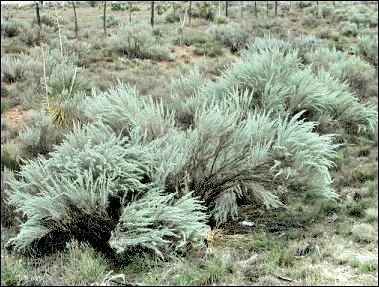
A familiar cry of real estate salespeople is "Location, location, location", for they are well aware that where a property is makes all the difference in the world for the ease of sale. Ecologists might equally well take up the slogan, for the whole ecological scene can change, and even reverse, from one place to another.
In many parts of the East, sandy soils of old beach lines tend to
support plants adapted to more arid conditions than nearby, heavier soils. The larger
particles that make up sand allow water to percolate downward more rapidly than do the
fine silts and clays of other areas—more quickly lost to questing roots of plants. In
contrast, the opposite tends to be true in desert areas. Stabilized areas of sand often
support a richer vegetation than surrounding areas of hardpan. In sand, the sparse
precipitation of the desert climate sinks in, while in dry, heavier soils, a hard rain
runs off and is lost, while water from a light rain lingers near the surface and soon
evaporates.
![]()
Contributor: Arthur H. Harris, Laboratory for Environmental Biology, Centennial Museum, University of Texas at El Paso.
Desert Diary is a joint production of the Centennial Museum and KTEP National Public Radio at the University of Texas at El Paso.

Sand Sagebrush (Artemisia filifolia), almost entirely limited to areas of sand. Photograph by A.H. Harris.